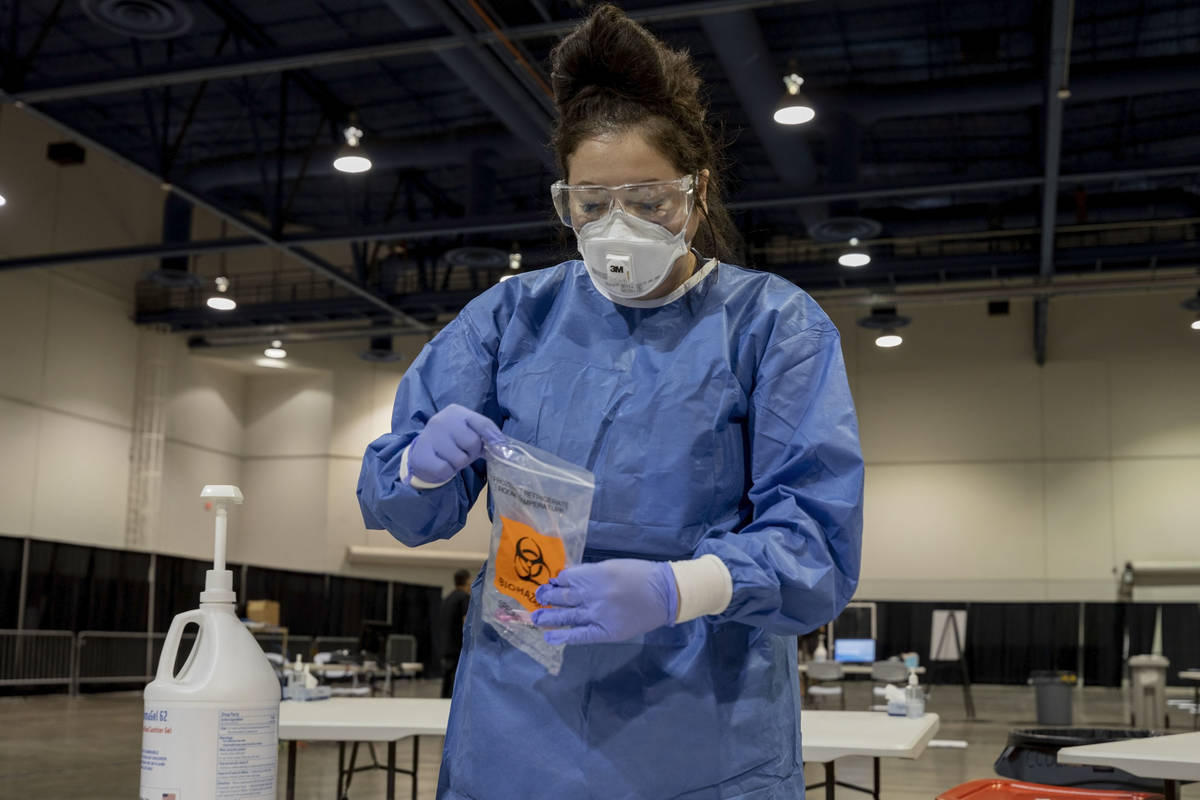Nevada changed how it measures COVID’s impact. Here’s why.

Nevada health officials have overhauled the state’s COVID-19 dashboard to measure the pandemic’s impact on communities. The changes, made on Oct. 15, focus more on trends over time, using 14-day moving averages instead of seven-day moving averages.
At first glance, the dashboard’s new look and graphics may be a bit jarring for those who have closely watched Nevada’s statistics since the state’s outbreak began in March, but state biostatistician Kyra Morgan says the changes are part of the state’s evolving response to the novel coronavirus.
“We have seven months behind us here in Nevada of COVID-19 response; it just doesn’t really make sense anymore to look at cumulative numbers,” she said. “Knowing how many cases that we’ve had since March is not particularly helpful in understanding the current burden of disease in our communities. That’s one of the reasons that we’re looking at trends.”
Morgan sat down with the Review-Journal to explain the decisions behind the changes.
Date person infected with COVID
A fundamental change to the dashboard shows a focus on the date an infected person was tested for COVID-19, rather than when his or her test result or death was reported to authorities.
For example, say an infected person received a COVID-19 test on Monday, but state officials did not receive the positive test results until Saturday. The new dashboard would attribute the case to Monday.
COVID-19 deaths have been recorded on the dashboard in a similar manner for several months.
Morgan said while lab results are reported to the state within two days on average, there have been instances where results have been delayed by more than a week.
“When we’re looking at trends and the numbers we want to be able to see when transmission occurs, the best measure that we have for when transmission occurred is actually when a person got tested,” Morgan said. “That’s a lot more accurate than the date that we found out about the test.”
14-day moving averages
One of the most sweeping changes to the dashboard is that almost all trends over time are now being measured as 14-day moving averages, as opposed to the previous seven-day moving average.
Morgan said the change was made to help smooth volatile fluctuations in trend lines, which can be caused by a single day of higher- or lower-than-average tests, cases or deaths.
For example, Nevada’s positivity rate — the percentage of its COVID-19 tests that have positive results — was previously measured with a seven-day moving average. That rate had experienced a consistent series of peaks and valleys in previous weeks.
“We’re trying to get that trend to be as smooth as possible, so that an end user can look at it and really follow that line and understand what’s happening,” Morgan said.
Other metrics that are being measured on both a daily basis and as a 14-day moving average include testing trends, confirmed cases, deaths and the growth rate of new cases.
Testing encounters
The state has stopped measuring the number of COVID-19 tests processed, in favor of tracking “testing encounters” instead.
Basically, the new measurement ensures that an individual person can have no more than one test assigned to him or her per day.
The change was spurred by the proliferation of rapid COVID-19 antigen tests, which can return results in as little as 15 minutes. However, Morgan said some rapid tests present larger numbers of false negatives, so a person may be given both a rapid test and a typical PCR test to confirm a negative result.
Measuring “testing encounters” will help keep the state’s positivity rate from being artificially lowered by one person receiving multiple tests in a day, Morgan said.
“We want to make sure that we’re only counting either one negative or one positive per person, per instance in which they are tested,” she said.
Elevated transmission by county
In July, the state began flagging counties for risking “elevated transmission” of COVID-19 if they meet two of three criteria.
The state released its findings on a weekly basis for months, but the new dashboard provides updates on a daily basis for each county.
Morgan said the state’s COVID-19 mitigation task force is still evaluating a snapshot of the data taken once a week on Mondays.
But, she added, providing the data to the public on a daily basis allows counties to track how they are performing in real time. It also allows Nevadans to know if their county is seeing elevated risk.
“There’s just no reason for us not to be showing that information on a daily basis,” she said.
Contact Michael Scott Davidson at sdavidson@reviewjournal.com or 702-477-3861. Follow @davidsonlvrj on Twitter.